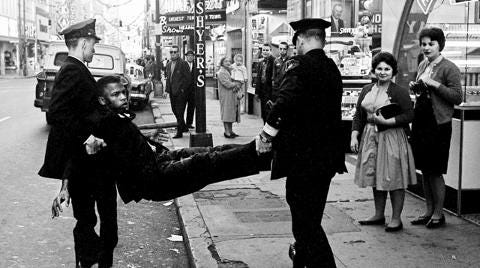The Civil Rights Movement and Television
< PALEYEDUCATION : Online Classes
Grades 9–12
Class Description
In an effort to aid at-home learning, we are making selected media for this typically on-site class available here online, including pre-viewing focus questions and post-viewing discussion questions.
In the years between 1954 and 1965, more legislation was passed, more court decisions were rendered, and more social change was effected in the name of civil rights than at any time in U.S. history. The rise of the Civil Rights Movement paralleled the growing use of television in the United States. In 1950 television was still in its infancy, but by 1960, televisions were present in ninety percent of American homes. Television provided the American public with a means to witness the struggle for civil rights nearly in real time and led a more informed society to enact social change.
The lesson below is intended as a resource for students and teachers interested in learning more about some of the tactics civil rights activists used as part of a larger nonviolent strategy to affect social change, and at the same time think about the role television journalists played as participants and observers in the movement. We encourage students to have some historical background with the longer timeline of the Civil Rights Movement leading up to the 1960s, before they view this material. As always, reviewing the vocabulary below will help enrich discussions about the media.
Vocabulary
CIVIL DISOBEDIENCE: The use of nonviolent resistance, or direct action, to challenge economic and political laws considered unjust
CIVIL RIGHTS: The nonpolitical rights of a citizen; the rights of personal liberty guaranteed to U.S. citizens by the Thirteenth and Fourteenth Amendments to the Constitution and by acts of Congress
DISCRIMINATION: Unfair treatment of a person or group resulting from prejudice
JIM CROW LAWS: State and local laws that enforced racial segregation in the Southern United States. All were enacted by white Democratic-dominated state legislatures after the Reconstruction period and enforced until 1965.
NAACP (National Association for the Advancement of Colored People): An organization formed in 1909 to protect the rights of African-Americans
PREJUDICE: Unfair opinions against a group formed without facts to support them
SCLC (Southern Christian Leadership Conference): An African-American civil rights organization closely associated with its first president, Martin Luther King Jr., which had a large role in the American Civil Rights Movement
SEGREGATION: The policy or practice of separating people of different races, classes, or ethnicities in schools, housing, and public or commercial facilities, especially as a form of discrimination
SNCC (Student Non-Violent Coordinating Committee): The principal channel of student commitment to the Civil Rights Movement during the 1960s
Background Information
In many southern states, Jim Crow laws were created after reconstruction as a way to oppress African-Americans who had recently been given freedom. These laws separated public spaces like libraries, schools, public transportation, restaurants, parks, bathrooms, and drinking fountains, by race. The laws were deemed "separate but equal" however, in reality, they were separate but far from equal. As a strategy to challenge these discriminatory laws, a nonviolent direct action method was adopted by many (but not all) organizations participating in the struggle. Nonviolence doesn't just mean not doing violence; it's also a way of taking positive action to resist oppression or bring about change. The aim of nonviolent conflict is to persuade your opponent that your point of view is right. In order to challenge Jim Crow laws across the south, several different methods were employed including, boycotts, marches, mass arrests, jail-no-bail, voter registration, faith-based organizing, citizenship education, lawsuits, citizen patrols, community services, and sit-ins.
Beginning with its first broadcast in 1960, the acclaimed documentary series NBC White Paper was lauded for using television as a way to showcase journalistic excellence and encourage an understanding of global affairs. It is remembered as a symbol of network news that helped spark fiery competition between CBS and NBC in the 1960s. A clip from the installment below focuses on the student-led lunch counter sit-in movement, and features a young John Lewis and Diane Nash.
NBC White Paper: Number 2: Sit-In (1960)
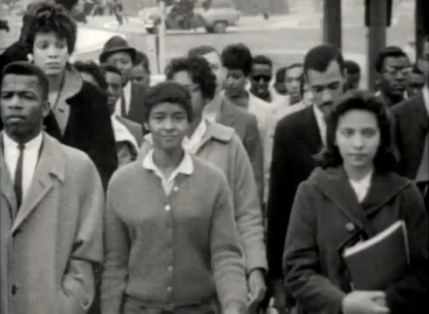
Our clips are from the Paley Archive. To view, you need to register. If you have already received your username and password, click to log in and view media.
Pre-Viewing Focus Question:
• What tactics are students using to challenge segregation laws at lunch counters, and how do other people in the community respond to their actions?
Post-Viewing Discussion Questions:
• Summarize what happens in this clip.
• Who do we meet and what do you learn about them?
• What are they planning to do?
• What civil disobedience tactic is being used by activists in this clip?
• What were some of their specific goals other than to desegregate the lunch counters?
• What obstacles do they face during the sit-in?
• How did the white people in the restaurant react to the protesters?
• How did the protesters react to the violence they received?
• Why were they arrested? What happened to the people who attacked them?
• In your opinion, was that fair? Why or why not?
Background Information
In the spring of 1961, despite the equal protection clause of the Fourteenth Amendment of the United States Constitution and two Supreme Court decisions specifically outlawing segregation in interstate travel, black Americans, traveling by bus across state lines in the South, were still forced to sit in separate sections and made to use separate facilities in bus terminals. In 1961, over 400 black and white Americans put their lives at risk traveling together on buses as they travelled through the Deep South deliberately violating Jim Crow laws in order to challenge a segregated interstate travel system. Dubbed Freedom Riders, these activists were met with extreme racism and mob violence at every stop as they crossed the Mason-Dixon Line. In the clip below you will see a report about the Freedom Riders experience as they arrive in and attempt to leave Birmingham, Alabama.
CBS Reports: Who Speaks for Birmingham? (1961)
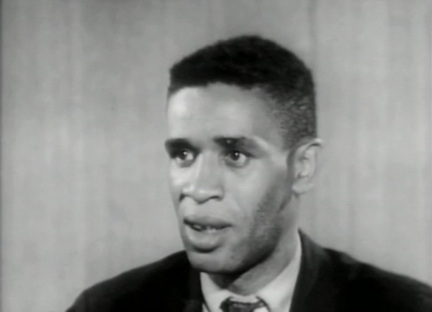
Our clips are from the Paley Archive. To view, you need to register. If you have already received your username and password, click to log in and view media.
Pre-Viewing Focus Question:
• What challenges or obstacles do the Freedom Riders face getting in and out of Birmingham?
Post-Viewing Discussion Questions:
• What do we learn from the reporter about Birmingham at the beginning of this clip?
• What do you learn from the reporter specifically about the Freedom Riders and their experience arriving in Birmingham?
• What do we see? What don’t we see?
• What does he tell us about the law enforcement response to the attack? What does that let us know specifically in regard to systemic racism?
• There are three major parts to this section of the broadcast: reporter overview/commentary, footage of the effects of violence (i.e. bus skeleton and injured freedom riders), and interviews with the Freedom Riders. Which part did you find most compelling? Why?
• How does the reporter overview compare to the other sections? What do you think his perspective is? How can you tell?
• What do you think a reporter’s responsibility is in an ethically or morally challenging event? Should he or she get involved? When? Under what circumstances?
• What challenges do the Freedom Riders face in getting out of town and why?
• How does this tactic compare to the lunch counter sit-ins? What is the same about it and what is different? Do you think one tactic is more effective than the other? What are specific advantages to using both tactics as part of a larger strategy for effecting change?
Learn More
For a deeper dive into the Freedom Riders history watch the clip below featuring Percy Sutton who was a prominent black American political and business leader, an activist, and, at one time, a lawyer for Malcolm X. He was the highest-ranking African-American elected official in New York City when he was Manhattan borough president from 1966 to 1977, the longest tenure at that position. He was also a Freedom Rider.
ABC Bell & Howell Close Up! Walk in My Shoes (1961)
Percy Sutton clip
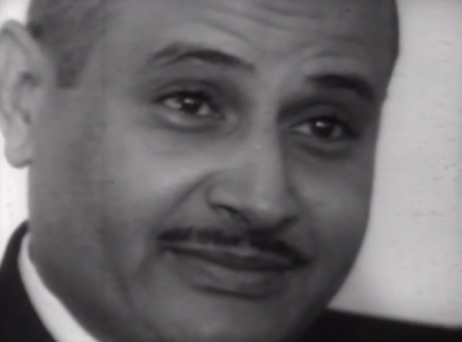
Our clips are from the Paley Archive. To view, you need to register. If you have already received your username and password, click to log in and view media.
Background Information
CBS Reports: Who Speaks for Birmingham? was a controversial documentary to produce and air. Reporter Howard K. Smith, a Louisiana native, came to Birmingham in 1961 and was the only national media figure in town when the Freedom Riders were brutalized by a mob on the streets under the passive eyes of Birmingham police. Those interviewed for the program included Fred Shuttlesworth, who described the times he had faced violent mobs during his efforts to lead challenges to segregation, and Eleanor Bridges, who described the feelings of white society who had not perceived the injustices under the Jim Crow system. In the clip below you will hear from the citizens of Birmingham, both white and black, about their views on integration and race relations, which give us keen insight into segregation’s legacy and long lasting harmful effects.
CBS Reports: Who Speaks for Birmingham Clip 2 (1961)
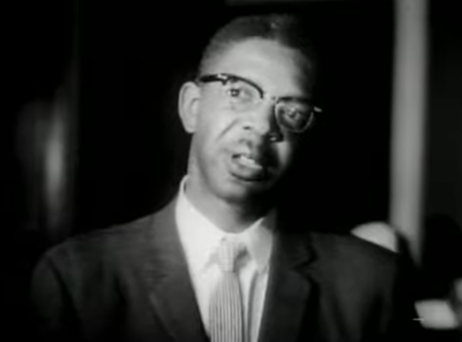
Our clips are from the Paley Archive. To view, you need to register. If you have already received your username and password, click to log in and view media.
Pre-Viewing Focus Question:
• What different opinions do people have about integration and race relations in Birmingham? Who stands out the most to you?
Post-Viewing Discussion Questions:
• What kinds of things do we hear people saying in this clip?
• What kinds of things do the white people say? What feeling do you get as you listen to them?
• Who stood out to you the most?
• What did they say and how did they go about supporting their views?
• What kinds of things did members of the black community say?
• Who stood out to you the most in that group and why?
• How did the views of the white community compare to those of the black community?
• What do you learn about each community just from hearing a few people speak as representatives of each?
• How might this clip help deepen your understanding of racial inequality in the south at that time?
• How might this clip help us better understand why racial tensions persist across the country today?
Additional Resources
There are so many great resources for studying the Civil Rights Movement, but below are some of our favorites.
Watch
Reconstruction: America after the Civil War with Henry Louis Gates Jr.
Freedom Riders by Stanley Nelson
Eyes on the Prize documentary series by Henry Hampton
Facing History and Ourselves study guide
Read
The New York Times 1619 Project
Reporter Howard K. Smith’s obituary
March comic trilogy by Congressman John Lewis, Andrew Aydin, and Nate Powell

